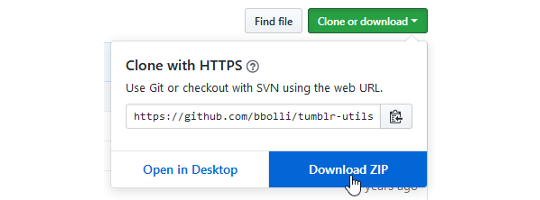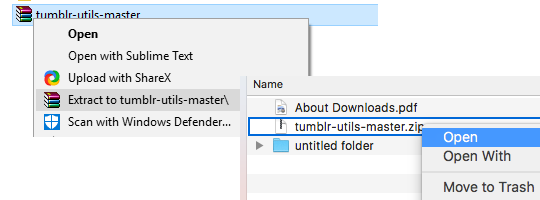#backup

From File Systems to the Cloud and Back

Cloud storages today are a terrific alternative to saving data on local computer system or in NAS storage. Begun with Amazon S3, such options are used by a lots of business, consisting of Microsoft with their Azure Blob Storage.
The benefits of cloud storage are nearly infinite storage capability (usage as much as you need, not as you have), the range in between the storage and your location (the data won’t be lost in a mishap or fire, and access of third parties to your information is severely restricted), reduced expense of data management.
At the same time cloud storage works in the way that does not match regular approaches to storage gain access to, such as hierarchical file systems and relational databases. Internally designed as substantial tables with an index and BLOB field for information, they do not give enough versatility that submit systems or database management systems can offer to the developer and user. The developer needs to carry out translation in between the data he has in the application and the back-end cloud storage.
Another substantial drawback is a distinction between APIs, used by different services. While the majority of services provide so-called REST API, this API remains in truth a format for requests and responses sent over HTTP. Demand commands, criteria and functions provided by services, differ significantly. Due to this switching in between cloud services needs writing of different code for each API.
Lastly, the primary factor of (in) acceptance of storage based services is a concern of ensuring information safety. Though company inform us about file encryption used on their side, such encryption is performed on their systems and there’s no guarantee that it’s really reputable and if it is even carried out. So security of the data is a real problem and not a dream of cloud storage challengers.
Luckily, there exists a possibility to address all of the above problems in a simple and really cost-efficient way.
Solid File System (SolFS) provides the missing pieces that fit well into cloud storage architecture.
As many file systems, SolFS is page-based. This indicates that it operates not with random series of bytes, but with blocks (sectors on the disk, pages in memory) of repaired size. This makes it simple to back SolFS with practically any storage.
To make such backing possible SolFS supports callback mode, in which it asks your application to shop or obtain the block to or from the back-end storage. So all you need to do is implement two basic functions “put the page #X to the cloud storage” and “retrieve the page #X from the storage” in your code, which’s all - you have a file system in the cloud!
However that’s not all SolFS can use. The file system offers several advanced functions, such as built-in file encryption and compression (performed on your side, if you keep in mind the cloud security issue referenced above), nearly unlimited possibilities for saving metadata (various supplemental information about the main file or data), and to carry out SQL-like search for files. Moreover, if you need custom encryption (eg. using secrets kept on cryptographic hardware tokens), this is possible with two other callbacks - “encrypt page #X” and “decrypt page #X”.
And what if you need not a file system, but a relational database? No problems either! You can utilize your favorite DBMS and have it save it’s files on the virtual disk, developed by SolFS (System Edition). In this manner the database files are saved in the cloud storage, and your application deals with them through database management system of your option.
Another advantage of SolFS is that moving from one cloud storage service to another is as simple as rewriting 2 standard functions for storing and recovering of pages to and from the cloud storage.
You can say that you still need the code, that works with the cloud. This is appropriate, but it’s a lot easier to compose the code that shops and obtains fixed-sized files (each page has the very same size) by page number, than to try to carry out a relational database or a file system in the cloud yourself.
If you don’t want to compose cloud-specific code at all, we have a solution for you too. It’s CloudBlackbox - the elements that offer uniform access to different cloud storage services. These parts both supply consistent access to cloud storages (Amazon S3, Microsoft Azure at the moment with more to come) and supply improved encryption abilities, such as certificate-based file encryption of information. So if you are moving to the cloud, you do not require to discard recognized paradigms and existing code. Updating them to modern industry offerings is simple and fast.
PLease visit our site: https://evrhub.com/10xdrive-review/
Watching people receive their karma when a goddess like me only came in peace and love and light. It’s always some privileged prick fucking with me while I’m enjoying the my own universe, doing my own thing, not bothering them. Energy is soooooo real, just be GOOD.
Post link
Using TumblThree-v1.0.8.26 to save my posted pics/gifs.
Anybody knows how to save tags attached with pic posts ? I only get pics.
Tumblr’s own backup does not finish for my blog.
I won this awesome @gtechnology #IP66 Rugged Drive. Thanks @REDDigitalCinema and @photoconhawaii #backup #dam #storage #rugged #iwon #stoked #winnawinna #imthatwinna (at Neil S. Blaisdell Concert Hall)
https://www.instagram.com/p/Bnh_YpqgyW6/?utm_source=ig_tumblr_share&igshid=28qmo1ecu9q5
Post link
I know many of us have been using TumblThree - but as many of the more texty of us, I wanted something that would hold on to formatting and the like.
The best option I have found is this:
https://github.com/bbolli/tumblr-utils/blob/master/tumblr_backup_for_beginners.md
That is the link to the step-by-step instructions on how to get it to work. It takes a modicum of ability with the computer, but the end result is a gorgeous INDEX file you can load in your browser and all of your posts sequentially by month.
Please, consider giving this a share to help other writers, erotic and otherwise, in the community that are scared they’ll lose the work they’ve done on their multi-media posts.
xoxo
Bice
(bicetales.bdsmlr.com)
#derringer #pocket #rocket #backup #filigree #scroll #engraved #carved #art #usnstagram #pocketdump #makersgonnamake #artist #pistola #357 #bondarms #organic #vines #leaves #nature #flow #followme
Post link
#workflow #pencil #wip #metal #steel #sketchbook #scroll #design #filigree #vines #organic #growth #ornamental #floral #engraving #derringer #edc #pocket #dailycarry #texas #backup
Post link
#SIGSAUER #P938 #Backup #WhenitCounts
——
#SIG #SIGFan #SIGLife #TheRealSIGSAUER #EDC #Pistol #LiveFreeorDie #Instaguns #guns #2a #9mm #BackupThatBackup #AlwaysReady #DefendYours
Post link
www.twitter.com/CableBoxMax - My Twitter account for those interested

From File Systems to the Cloud and Back

Cloud storages today are a great alternative to keeping information on regional computer or in NAS storage. Begun with Amazon S3, such services are offered by a lots of companies, including Microsoft with their Azure Blob Storage.
The advantages of cloud storage are almost limitless storage capacity (use as much as you require, not as you have), the range in between the storage and your area (the data won’t be lost in an accident or fire, and gain access to of 3rd parties to your information is seriously restricted), decreased cost of information management.
At the same time cloud storage works in the manner in which does not match routine techniques to storage gain access to, such as hierarchical file systems and relational databases. Internally created as big tables with an index and BLOB field for information, they don’t give sufficient versatility that submit systems or database management systems can provide to the developer and user. The developer needs to carry out translation in between the data he has in the application and the back-end cloud storage.
Another significant drawback is a difference between APIs, used by different services. While the majority of services offer so-called REST API, this API is in reality a format for requests and reactions sent over HTTP. Request commands, criteria and functions used by services, differ significantly. Due to this changing in between cloud services needs writing of separate code for each API.
Lastly, the primary factor of (in) acceptance of storage based options is a question of ensuring information safety. Though service providers tell us about file encryption used on their side, such encryption is performed on their systems and there’s no guarantee that it’s actually reliable and if it is even performed. So safety of the information is a genuine problem and not a fantasy of cloud storage opponents.
Fortunately, there exists a possibility to address all of the above issues in an easy and very cost-effective method.
Solid File System (SolFS) provides the missing out on pieces that fit well into cloud storage architecture.
As the majority of file systems, SolFS is page-based. This indicates that it runs not with random series of bytes, however with blocks (sectors on the disk, pages in memory) of repaired size. This makes it easy to back SolFS with almost any storage.
To make such support possible SolFS supports callback mode, in which it asks your application to store or retrieve the block to or from the back-end storage. So all you require to do is execute 2 simple functions “put the page #X to the cloud storage” and “obtain the page #X from the storage” in your code, and that’s all - you have a file system in the cloud!
But that’s not all SolFS can provide. The file system provides numerous sophisticated functions, such as integrated encryption and compression (carried out in your corner, if you remember the cloud security problem referenced above), almost limitless possibilities for saving metadata (different additional details about the primary file or data), and to carry out SQL-like search for files. Additionally, if you require custom-made encryption (eg. using secrets stored on cryptographic hardware tokens), this is possible with two other callbacks - “secure page #X” and “decrypt page #X”.
And what if you need not a file system, but a relational database? No problems either! You can use your preferred DBMS and have it keep it’s files on the virtual disk, created by SolFS (System Edition). This way the database files are kept in the cloud storage, and your application deals with them via database management system of your option.
Another benefit of SolFS is that moving from one cloud storage service to another is as basic as rewording 2 standard functions for storing and recovering of pages to and from the cloud storage.
You can state that you still need the code, that deals with the cloud. This is proper, but it’s a lot easier to compose the code that shops and obtains fixed-sized files (each page has the very same size) by page number, than to attempt to carry out a relational database or a file system in the cloud yourself.
If you don’t wish to write cloud-specific code at all, we have an option for you too. It’s CloudBlackbox - the components that supply consistent access to different cloud storage services. These parts both provide consistent access to cloud storages (Amazon S3, Microsoft Azure at the minute with more to come) and supply enhanced encryption abilities, such as certificate-based encryption of data. So if you are moving to the cloud, you do not require to discard recognized paradigms and existing code. Updating them to modern-day industry offerings is simple and quick.
PLease visit our site: https://evrhub.com/10xdrive-review/
I’ll be removing almost everything here but I’d like to try and keep my page around for SFW cosplay photosets and such.
I’m sure many of you have pics, gifs, text posts, and videos you’d like to save before purging or moving to a new platform (from your blog or someone else’s!) I thought I’d make an informative post about bbolli’s tumblr backup utility.
1.Download the zip from GitHub

2.Download the latest version of Python 2.6 or 2.7 based on your OS

3. Install Python

4. Extract the zip from step 1. (Note: If you don’t extract it to your downloads folder the path to the file will be different than in the image!)

5a. On Windows open a Command Prompt window and type the following:
Downloads\tumblr-utils-master\tumblr_backup.py YourBlogName

A folder with the name of the blog will be created in the tumblr-utils-masterfolder.
5b. On Mac OS open a Terminal window and type the following:
sudo cp Downloads/tumblr-utils-master/tumblr_backup.py /usr/local/bin
cd Desktop
tumblr_backup.py YourBlogName

A folder with the name of the blog will be created on your Desktop.
6. In the newly created folder you can browse through the media in the folders, or open index.html to view it in your browser. The utility will not save your blog’s custom CSS or theme. Read the tumblr_backup.md file for additional info on the utility.
Please reblog this so more people know about it. I’m shadowbanned so it won’t be much use unless you help me get it out there!
I have to do some backtrack and password recovering since i don’t use them for a while, but well here’s everyting.
Deviantart|HF|Twitter|Pixiv|Backup Tumblr (just in case)
Also i manage to create a new (and SFW) ko-fi: http://ko-fi.com/littlenaavs
Godspeed my friends.

Big s/o to Romz for posting the macheteseal stick up! Make sure to hit up Romz for some production work!
.
#Repost @romzthegreat with @repostapp
・・・
My main interface has been acting up lately… got my backup just in case! #mbox2 #oldfaithful #protools #backup #studioflow #mercuryretrograde
Post link


















